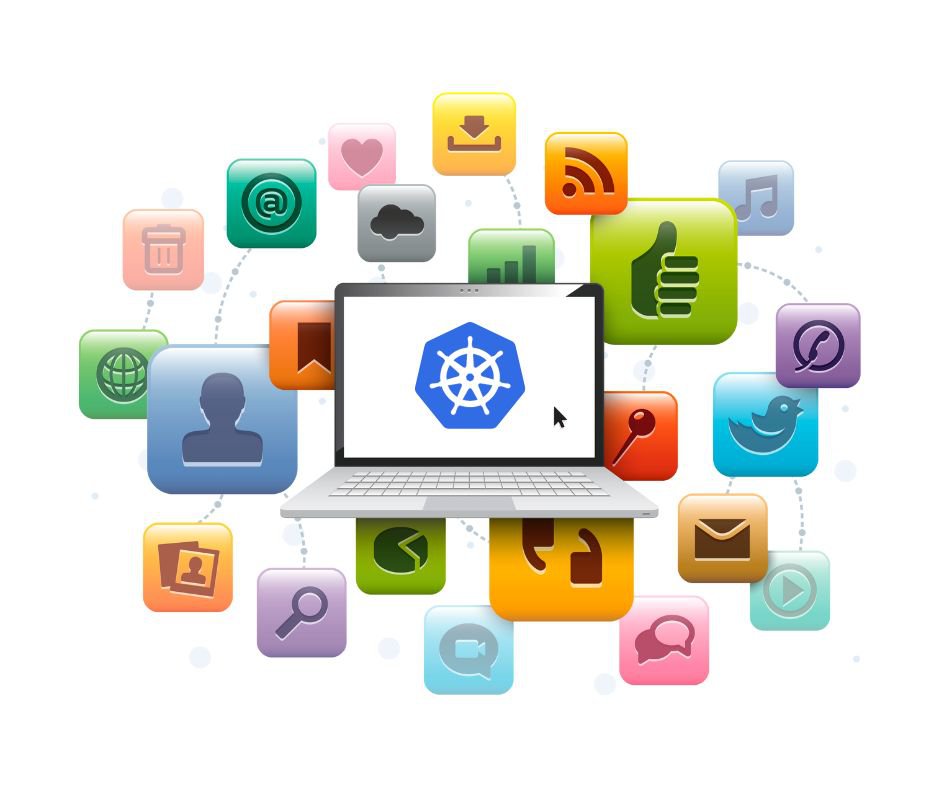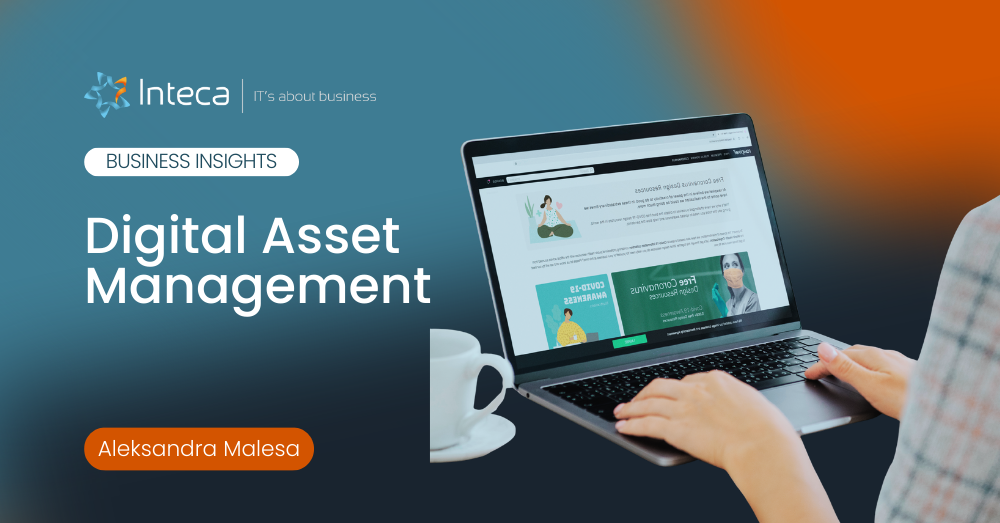Application modernization is a complex process of modernizing the features and internal architecture of the app. Sometimes, it also requires modernizing the whole platform infrastructure of existing applications. Constant development, and adjusting your business to the changing conditions are crucial to gaining an advantage in the market. By properly modernizing the applications, your organization can create new business value from aging applications. Using new capabilities and features will definitely help you to update your apps and extend their business usefulness. Currently, we can see different approaches to application modernization. Some of them for example are focused on bringing monolithic, on-premises applications into the cloud architecture. With a proper strategy on how to upgrade and modernize your application, you definitely can make a difference. In this article, we will describe how important is to focus on application modernization, and what are the best modernization strategies.
What to do to achieve competitive advantage in IT?
If you want to achieve a competitive advantage in the market, you need to have an app, and platform designated for this app, that will allow you to adjust it and apply necessary changes. Being swift and agile is the keystone in the IT business, and that is why you need to adjust your approach, especially if our app is becoming more and more obsolete. If you manage to conduct the changes in your app quickly and adjust it to the market trends – you will definitely outperform your competition.
Please take a look at four important metrics that can allow your IT business to get on a higher level. If you follow these values and strategies, you will definitely overtake your competitors!
Deployment Frequency (DF):
This metric will allow you to answer the question “How often does the organization deploy into production?”. Deployment Frequency should be considered as an Agile metric, as it helps innovation and trial, hypothesis testing so that companies provide the best features that benefit the end user. This metric mainly focuses on batch size, supporting the idea that smaller batches delivered more often increase performance. With this approach, Deployment Frequency is associated with the premise that a pipeline team has fewer code changes and fewer commits to test, increasing performance. If you wish to improve your overall competitive position, you definitely should focus on the DF metric.
Lead Time to Changes (LTTC):
Lead Time to Changes metric will help you to understand how long it will take for a commit to be in the production stage. If you wish to study this metric and apply this methodology, you will also have to focus on your company’s technical capabilities. First, you need to assess the time your team is spending on deploying, testing as well as delivering a specific IT product. With such an approach you will find out, that code provides value only when put into production. Only companies with strong technical capabilities, good system design, and focused teams will be able to outperform the competition. So if you are thinking about improving your performance, focus on the LTTC for sure!
Mean Time to Recovery (MTTR):
If you wonder how long it will take for my company to recover from a failure in the production stage – you are thinking about the MTTR metric. The Mean Time to Recovery metric has a strong assumption that companies can’t avoid failures. This is fairly rational and should be considered in every company. There are various situations when incidents such as security threats, capacity errors, or other DNS issues arise. Such incidents are normal consequences of having an overall active development environment.
What is important to focus on, however, is how such occurrences will affect our company when they happen. Will the company systems become fully inoperational or only partially? Or will the remedies already in place allow the company to reduce the effects of these incidents to the level where it will not cause any downtime at all? With the MTTR metric you need to consider, that the shorter it takes for a failure to be solved, the higher the team performance and overall end-user satisfaction will be.
Change Failure Rate (CFR):
The CFR metric will help you to understand How often a company’s deployments generate failures in production. Change Failure Rate is really important, especially in lean manufacturing, since it ensures that a company focuses both on quality and production. Skillful use of this metric will give you very useful data about the error rate connected to the new software releases and new future deployments. This way you will be able to prepare your team, adjust the quality control system and focus more on the performance in the early stages of the process. Change Failure Rate definitely will improve acceptance of your work by the clients.
Benefits of application modernization
If you plan to proceed with the application modernization you probably know what you can achieve. However, it is important to know that application modernization is the process that can really improve your company’s impression among clients. If you wish to accelerate your development, increase ROI, or speed up the business processes, be sure to implement the app modernization. Here are the most important benefits.
Improved functionality
Modernizing outdated applications has a direct impact on the functionality of the organization. With a such process in place, an organization will be able to use or integrate modern tools and technologies! Also, the team will surely be motivated and empowered knowing that the best and latest recourses are available at their disposal.
Reduced operational costs
Most of the modernization of applications is shifting the organization towards a cloud-based approach. There are many benefits of using cloud-based tools. One of them is definitely reduced operational costs. With such an approach, you can control the overall costs and be sure that everything is under proper supervision. As cloud-based tools are hosted by the providers, the maintenance, configuration, and security are on the supplier’s side. You can outsource the risk and gain a competitive advantage.
Better performance
One of the direct effects of removing obsolete tools is an overall efficiency boost, as automation is now integrated into the workflow. Many manual tasks can now be fully automated without the risk of human error. Adding optimized features empowers the team, and this way, they are able to deliver more in a timely manner.
Upgraded security
Application modernization strategies also assume improving the overall app security. Using an obsolete solution can increase the potential risk of being targeted by intruders. By adopting new technologies, organizations can be strong security-wise and resist risks.
Application modernization challenges
Digital transformation and application modernization can be a real challenge. If you want to improve your IT enterprise and ensure that you are ahead of your competition – identify these challenges.
Internal difficulties
The human factor is a big challenge when you think about app modernization or for example a cloud migration. Certainly, not every team member will be ready to change the rules of work and forget about old habits resulting from an outdated system. That is why it is so important to have an inventive and flexible team.
Inappropriate plan of application modernization
Before you move from the legacy system to a new, modernized one, you will need to prepare a plan. Often, organizations fail to achieve the intended goals, because they lack a solid plan. First, you need to find the apps that will require software development, then prepare an application portfolio with all the changes you would like to introduce. Make sure to decide on a strategy and set up a budget. This way you will be able to introduce the application modernization solutions.
Insufficient funds
In many cases, finances are the main obstacle to a digital transformation. You need to consider that application upgrades will require a large upfront investment. Be sure to prepare and include these expenses in your plan.
Ensuring the data integration for application modernization
Before you proceed with your software development you need to focus on proper data integration. This is a huge challenge, and you need to be sure that during this process, any data that is migrated will not be lost. If you want to have an adequate customer experience, make sure that you secure your data during the system migration.
Application modernization tools
If you want to achieve all the above-mentioned metrics and modernization goals, you will need the right tools. The implementation of a new platform based on Kubernetes, solutions related to Kubernetes, and a new production process will allow you to build a platform with which you can achieve the required metrics. Kubernetes is an open-source project that has become one of the most popular container instrumentation tools around.
Using Kubernetes will allow you to deploy and manage multi-container applications at scale. Usually, Kubernetes is used with Docker, the most popular containerization platform, however, it can also work with any container system that conforms to the Open Container Initiative standards. What is also important, Kubernetes is open source, with very few restrictions on how it can be used. That is why this system can be used both on-premises and in the public cloud. Such a solution is therefore perfect for your cloud platform migration during the application modernization.
Are application modernization services necessary? Are modernization efforts justified?
It’s a fact that modernizing your application is not going to be easy. However, you can make this task much easier if you adopt the right kind of application modernization tools. We are confident that if you want to succeed in the application modernization project, you definitely should choose the right tools. Luckily there are many different approaches to legacy application modernization. It is important that each company choose the course of action according to its plan and development strategy. If you want to gain an advantage in the constantly changing IT market, you need to act effectively and quickly!




